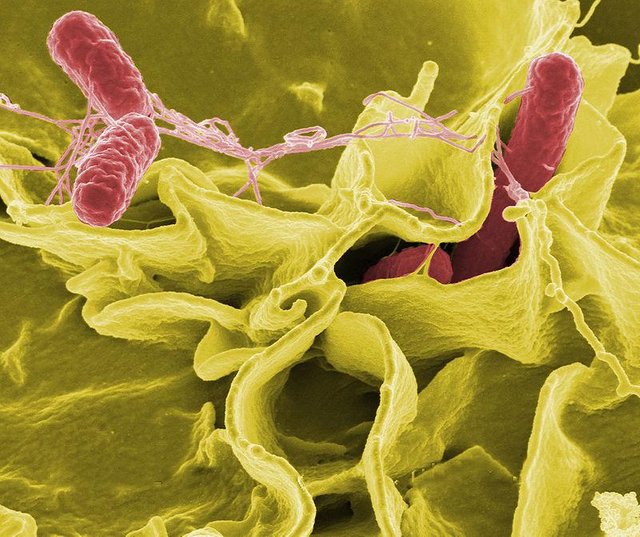Scientists Genetically Modify Bacteria To Kill Cancer Cells
Salmonella is one of the most common causes for food poisoning. However, consider the possibility that, as opposed to assaulting the human gut, the activist bacteria could be changed to handle the most aggressive types of cancer.

That is the reasoning behind an exceptional new review in which researchers genetically altered salmonella to battle cerebrum (brain) tumors.
Scientists from Duke University utilized the novel treatment on rats with glioblastoma, and saw critical increments in life expectancy.
Around 20 percent of rodents survived 100 days longer than those without it.
That is identical to 10 years in people terms.
“Since glioblastoma is so aggressive and difficult to treat, any change in the median survival rate is a big deal,” said Johnathan Lyon, a PhD student and co-author of the study. “Since few survive a glioblastoma diagnosis indefinitely, a 20 percent effective cure rate is phenomenal and very encouraging.”
So how can it function?
In their own particular words, the analysts transformed the bacterium into a "cancer-chasing rocket that produces self-destruct arranges profound inside tumors".
A progression of hereditary changes set off the bacteria to deliver aggravates that train cells to submit suicide.
This only occurs within the environments of low levels of oxygen. Since tumors have a tendency to have strangely low oxygen, the bacteria focuses on the cancer, yet not the sound cells around it.
“A major challenge in treating gliomas is that the tumour is dispersed with no clear edge, making them difficult to completely surgically remove,” said Bellamkonda. “So designing bacteria to actively move and seek out these distributed tumours, and express their anti-tumour proteins only in hypoxic, purine rich tumour regions is exciting.”
The analysts now want to program the bacteria to create drugs that have a considerably more grounded effect on the tumors.
The review showed up in the most recent release of the journal Molecular Therapy – Oncolytics.
This is very interesting, what happen to the bacteria, when the tumor is destroyed?
I suppose you could use antibiotics like regular salmonella treatment. Scientists are also trying to implement a way of population control where once the bacteria population reaches a certain mass, the cells rupture, killing 90% of the population leaving the 10% to repopulate due to the fact the early test subjects died due to toxicity.
Thanks for the feedback.
Thank you for sharing. They aren't called diaries, they are journals.
Fixed, thank you!
You are welcome! See you around!